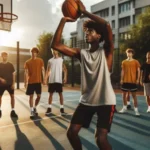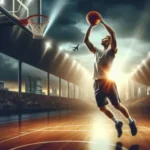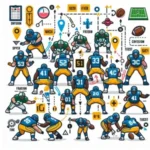In basketball, the ability to see the game unfold around you is just as crucial as your shooting accuracy or defensive prowess.
court vision—the art of anticipating plays, reading defenses, and making split-second decisions—can elevate a good player into a great one. It’s not merely about having the ball in your hands; it’s about understanding the intricate dance of players on the court and knowing how to orchestrate it. Whether you’re a seasoned player looking to refine your skills or a beginner eager to make a mark, enhancing your court vision and passing abilities is essential to elevate your game. In this blog post, we’ll explore effective techniques and drills that will sharpen your awareness, improve your passing precision, and ultimately unlock your full potential on the court. Get ready to transform your gameplay and become the playmaker you’ve always aspired to be!
1. Understanding Court Vision: What It Is and Why It Matters

Court vision is often hailed as one of the most essential skills in basketball, serving as the backbone for effective playmaking. At its core, court vision refers to a player’s ability to see and anticipate the movements of teammates and opponents on the court. It’s about more than just keeping your head up; it’s about possessing a mental map of the game that allows you to process multiple elements simultaneously—where your teammates are positioned, how defenders are shifting, and what opportunities for scoring might be on the horizon.
Understanding court vision starts with the realization that it directly impacts not only your individual performance but also the overall dynamics of your team. Players who excel in this area can create scoring opportunities, facilitate ball movement, and lead their teammates to better shots. They become the catalysts for offensive plays, often transforming what might seem like a chaotic moment into a well-orchestrated opportunity.
Why does court vision matter? For one, it enhances team chemistry and communication. A player with keen court vision can make quicker decisions, delivering timely passes that catch defenders off guard and leaving teammates open for easy baskets. This not only boosts the team’s offensive efficiency but also fosters trust among players, as everyone becomes aware that they can rely on their teammates to find them in critical moments.
Moreover, strong court vision enables players to read the game more effectively, allowing for strategic adjustments during fast-paced scenarios. Whether you’re driving to the hoop or navigating a crowded lane, the ability to decipher the movements of both teammates and opponents can set you apart as a playmaker. Ultimately, developing your court vision is a journey that involves practice, awareness, and a deep understanding of the game, making it a crucial skill for any aspiring basketball player looking to elevate their performance on the court.
2. The Importance of Passing Skills in Basketball
Passing skills are often the unsung heroes of basketball, yet they play a pivotal role in determining a team’s success on the court. While scoring may steal the spotlight, it is through effective passing that a cohesive unit is formed, enabling players to work in harmony and capitalize on their collective strengths. A well-timed pass not only facilitates scoring opportunities but also orchestrates the flow of the game, setting the rhythm and pace that can dictate the outcome.
When you think about the greats of the game, from Magic Johnson to LeBron James, their passing ability is what often elevates their performance beyond mere statistics. These players possess an innate understanding of the game, allowing them to anticipate their teammates’ movements and the defenders’ reactions. This court vision transforms a simple play into an opportunity for brilliance, as they deliver the ball exactly where it needs to be, often with a flair that electrifies the crowd.
Moreover, strong passing skills encourage teamwork and communication. They foster trust among teammates; when players know they can rely on one another to make the right pass at the right time, it builds confidence and camaraderie. A well-executed assist can ignite a team’s energy, leading to momentum shifts that can be crucial in tight games.
Effective passing also opens up the floor, creating space and options that will keep defenses on their toes. This movement not only enhances individual scoring chances but also stresses the importance of teamwork, showcasing how basketball is a collective effort rather than an individual pursuit. As you work on your passing skills, remember: each pass is an opportunity to create, to connect, and to elevate the game for both yourself and your teammates. Investing time in mastering these skills will lead to a more dynamic and successful basketball experience both personally and as part of a team.
3. Key Techniques to Improve Court Vision
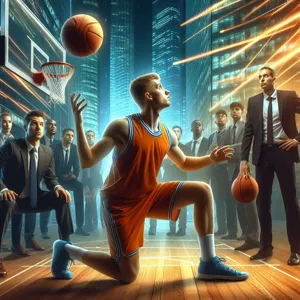
Court vision is an essential skill for any basketball player aspiring to elevate their game. It’s not just about seeing the immediate play unfolding in front of you; it’s about anticipating movements, understanding spacing, and making quick decisions that can turn the tide of a game. Here are some key techniques to help you enhance your court vision and passing skills:
**1. Improve Peripheral Awareness:**
To truly develop your court vision, you must train your eyes to see more than just the ball and the player directly in front of you. Engage in drills that encourage you to focus on multiple areas of the court simultaneously. For instance, practice dribbling while keeping your head up and using your peripheral vision to track teammates and defenders. This can be achieved through simple exercises like zigzag dribbling or playing “keep away” with teammates.
**2. Watch Game Film:**
Studying film of yourself and other players can provide invaluable insights into court dynamics. Focus on how successful players position themselves, how they anticipate plays, and how they make decisions under pressure. Pay attention to their passing angles and how they read the defense. Consider keeping a notebook to jot down observations and strategies that you can implement during your own games.
**3. Engage in Vision-Training Exercises:**
Just like any other muscle, your vision can be trained. Incorporate exercises that specifically enhance your visual processing speed and accuracy. For example, practice with a reaction ball, which bounces unpredictably, forcing you to react quickly and improve your hand-eye coordination. Additionally, use drills that require you to identify and react to visual cues on the court, such as calling out plays or players while in motion.
**4. Communicate with Teammates:**
Effective communication is key to enhancing court vision. Develop a clear system of signals and calls with your teammates to indicate where they want the ball or to alert them to defensive shifts. This not only improves your understanding of their movements but also builds trust, allowing for better timing and execution during games.
**5. Play in a Variety of Situations:**
The more you expose yourself to different playing conditions, the better your court vision will become. Participate in pick-up games, join different leagues, or practice against varied skill levels. Playing against different opponents forces you to adapt quickly, enhancing your ability to read the court and react in real time.
By integrating these techniques into your training routine, you’ll not only improve your court vision but also enhance your overall basketball IQ. Remember, great players are not just defined by their scoring ability but by their capacity to create opportunities for others. Embrace the challenge, and watch your passing and court awareness soar to new heights!
4. Drills to Enhance Peripheral Awareness
To become a master of court vision, you must first hone your peripheral awareness. This crucial skill allows players to maintain a keen sense of their surroundings, spotting open teammates and potential defenders without having to rely solely on direct line-of-sight. Here are some effective drills designed to sharpen your peripheral vision and enhance your passing skills:
**1. Partner Passing with Blindfolds:** This drill requires two players and a blindfold. One player wears the blindfold and stands in the middle of the court, while the other player stands at a distance. The blindfolded player must rely on verbal cues from their partner to receive and pass the ball accurately. This exercise forces the player to focus on their auditory senses while enhancing their ability to pass without looking directly at their target.
**2. The 360-Degree Drill:** In this drill, position five cones in a circle around you, each representing a different passing target. As you dribble in the center, have a partner call out the cone numbers randomly. Your task is to quickly pivot and make a pass to the appropriate cone, all while keeping your head up and maintaining awareness of your surroundings. This exercise not only develops your peripheral awareness but also encourages quick decision-making under pressure.
**3. Wall Ball:** Find a sturdy wall and stand a few feet away from it. Toss the basketball against the wall and practice catching it with one hand while keeping your eyes focused forward. As you become comfortable, increase the distance or add in dribbling before the catch. This drill will improve your hand-eye coordination and help you learn to keep your head up, allowing you to observe the court while honing your passing skills.
**4. Vision Training with a Focus on Movement:** Set up a small grid with cones and have a partner move around within it. Your goal is to pass the ball to your partner while they are in motion, focusing on your peripheral vision to track their movements. This drill will help you become more adept at spotting open teammates in dynamic game situations.
By incorporating these drills into your training regimen, you’ll not only boost your peripheral awareness but also develop a heightened sense of court awareness. With practice, you’ll find yourself making quicker, more accurate passes and elevating your overall performance on the court. Remember, great players don’t just see the game—they feel it all around them.
5. Reading the Defense: Anticipating Movements
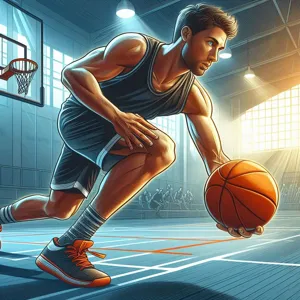
Understanding how to read the defense is crucial for any basketball player looking to elevate their court vision and passing skills. Anticipating the movements of defenders not only allows you to make smarter decisions but also enables you to create opportunities for your teammates. This skill can be the difference between a good pass and a game-changing assist.
To begin honing this ability, focus on studying the defender’s body language and positioning. Are they leaning toward you, indicating they’re ready to close out on a shot? Or are they overcommitting to one side, opening up lanes for a potential pass? These subtle cues can provide you with valuable information about where the defense is vulnerable.
In practice, simulate game situations where you’re forced to make quick decisions. Dribble towards the basket while maintaining your eyes up and scanning the court. This habit not only helps you become more aware of your surroundings but also conditions you to react instantaneously to shifting dynamics.
Moreover, watch film of both your games and professional matches. Pay close attention to how top players read defenses and anticipate movements. Notice how they exploit gaps, find the open man, and adjust their passes based on the defenders’ reactions. This analysis will deepen your understanding of defensive strategies and enhance your ability to predict their next move.
Remember, reading the defense is like playing chess; it’s all about anticipating your opponent’s next step. By developing this skill, you’ll not only become a more effective playmaker but also elevate your overall basketball IQ, making you an invaluable asset on the court.
6. Developing Spatial Awareness on the Court
Developing spatial awareness on the court is a crucial skill that can elevate your game to new heights. It’s not just about knowing where you are but understanding the dynamics of the game around you—the movement of your teammates, the positioning of your opponents, and the available passing lanes. This awareness allows you to anticipate plays and make quicker, more effective decisions.
To enhance your spatial awareness, start by practicing your peripheral vision. During drills, consciously focus on what’s happening around you without taking your eyes off the ball. You can do this by setting up a simple passing drill with a partner while trying to call out the numbers of your teammates positioned in various spots on the court. This exercise trains your mind and eyes to pick up on details that might otherwise go unnoticed.
Another effective technique is to visualize the court in sections. Break it down into zones—offensive and defensive areas—and analyze how players move through these zones during a game. Watch film of your games and those of professional players, paying close attention to how they exploit space and create opportunities. Note how they position themselves to receive passes or how they set up their teammates.
Incorporating small-sided games, such as 3-on-3 or 4-on-4, into your practice sessions can also significantly improve your spatial awareness. These formats force players to navigate tighter spaces, helping you quickly assess positioning and develop the instinct to find open teammates or drive to the basket.
Finally, communicate with your teammates. Constantly verbalizing your thoughts and observations during practice fosters a collaborative environment where everyone is aware of each other’s movements and intentions. This synergy not only strengthens your spatial awareness but also builds trust on the court, making your passing game all the more effective.
By honing your spatial awareness, you’ll become more than just a good passer; you’ll transform into a strategic playmaker who can read the game and respond with precision, ultimately unlocking your full potential on the basketball court.
7. The Role of Communication in Passing
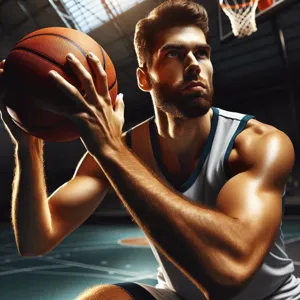
Communication is the lifeblood of successful basketball teams, and it plays a pivotal role in enhancing your court vision and passing skills. Without effective communication, even the most skilled players can find themselves out of sync, leading to missed opportunities and turnovers. The essence of communication lies in its ability to create a shared understanding among teammates, allowing for seamless coordination and anticipation of each other’s movements.
On the court, verbal cues—like calling out a teammate’s name or signaling for the ball—can make all the difference. These simple phrases not only help to alert your teammates to your intentions but also build trust and rapport. For example, using specific calls when you’re ready to receive a pass can help ensure that your teammates are aware of your position and readiness. This proactive approach fosters an environment where players are more likely to look for each other, enhancing overall team synergy.
Non-verbal communication is equally crucial. Eye contact, hand gestures, and body language can convey intentions without saying a word. A quick glance at a cutting teammate or a subtle nod can signal a perfect opportunity for a pass, making it essential to be aware of your surroundings. Developing this silent dialogue allows players to read each other’s cues, resulting in more fluid and instinctive play.
Moreover, regular practice of communication drills can significantly improve your team’s chemistry. Engaging in exercises where players must call out plays or communicate defensive switches fosters a habit of vocalizing intentions during game scenarios. As you become more comfortable with communicating on the court, you’ll find that your court vision sharpens as well; you’ll be more attuned to both your teammates and the opposition, allowing you to make smarter, quicker decisions.
In summary, honing your passing skills and court vision isn’t just about individual prowess; it’s about creating a cohesive unit that communicates effectively. By focusing on both verbal and non-verbal cues, you can elevate your gameplay and ensure that you’re not just a passer, but a playmaker who sees the game unfold in real time. As you embrace this collaborative approach, you’ll find that your confidence and ability to make precise passes will soar, unlocking new dimensions in your basketball performance.
8. Practicing Different Types of Passes
Practicing different types of passes is crucial for developing a versatile skill set on the basketball court. A well-rounded player can adapt to various game situations, creating more opportunities for their team. Start by mastering the basic chest pass, which is fundamental for short-range communication with teammates. Stand a few feet apart from your partner, hold the ball at chest level, and push it forward while snapping your wrists to generate speed and accuracy.
Next, incorporate bounce passes into your practice. This type of pass is particularly effective when defenders are in close proximity, as it travels along the floor and can evade their reach. To execute a bounce pass, aim for a spot about two-thirds of the way to your teammate, allowing the ball to bounce up to their hands.
As you gain confidence, experiment with more advanced passes, such as the overhead pass and the no-look pass. The overhead pass is invaluable for delivering the ball over defenders when you’re being closely guarded. To perform it, lift the ball above your head and use your arms to propel it toward your target with precision. Meanwhile, the no-look pass adds an element of deception—by looking in one direction while passing to a teammate in another, you can catch defenders off guard and create open looks.
Incorporate drills that challenge you to use these passes under pressure. Set up cones to simulate defenders, or practice with a partner who plays aggressive defense. The more you expose yourself to game-like scenarios, the better you’ll become at reading the court and making quick decisions.
Lastly, don’t forget to analyze your passing mechanics regularly. Record yourself during practice and review the footage to identify areas for improvement. By dedicating time to mastering various passing techniques, you’ll not only enhance your court vision but also become a more effective playmaker, making you an invaluable asset to your team.
9. Incorporating Vision Drills into Your Training
Incorporating vision drills into your training is a crucial step toward unlocking your full potential on the basketball court. These drills are designed to enhance your ability to see the game unfold around you, allowing you to make quicker, more accurate decisions when it counts. The beauty of basketball lies not just in individual skill but in the synergy between players, and developing court vision is key to becoming a valuable team player.
To get started, consider drills that focus specifically on your peripheral awareness. One effective exercise is the “Four Corners” drill. Position yourself in the center of the court while your teammates spread out to each corner. As they call for the ball, practice scanning the court and identifying the best passing option without losing sight of your surroundings. This drill not only helps you improve your passing accuracy but also builds your confidence in making quick decisions under pressure.
Another impactful drill is the “Moving Target” drill. Partner with a teammate who will continuously move around the court. Your task is to pass the ball to them while they’re on the move, focusing on leading them into open space. This exercise sharpens your ability to anticipate not just where your teammate is, but where they will be, reinforcing the importance of timing and precision in your passes.
Don’t forget to incorporate visual distractions as well. Set up cones or other obstacles on the court and practice dribbling while maintaining your vision on an external target. This can simulate the chaos of a live game, where defenders are constantly trying to block your sight and disrupt your flow.
Finally, watching game film can also enhance your vision skills. Analyzing plays from professional games allows you to see how elite players read the court and anticipate movements. Take notes on their passing choices, positioning, and decision-making processes, and then apply these insights to your own practice.
By diligently incorporating these vision drills into your training regimen, you’ll not only elevate your passing skills but also transform the way you perceive the game. As your court vision expands, you’ll find yourself making more impactful contributions to your team, leading to better plays and, ultimately, more victories on the scoreboard.
10. Analyzing Game Footage for Learning Opportunities
Analyzing game footage is a powerful tool that can significantly enhance your court vision and passing skills. By reviewing recordings of your own performance or professional games, you gain invaluable insights into the subtleties of gameplay that often go unnoticed in the heat of the moment. Start by focusing on your positioning on the court—are you moving to create passing lanes or standing still? Look for instances where you could have made a better pass or found an open teammate.
As you dissect the footage, pay attention to the decision-making processes of elite players. Observe how they anticipate plays, read defenses, and time their passes. Notice their body language and how they communicate with teammates, creating a rhythm that facilitates seamless ball movement. By identifying these patterns, you can begin to incorporate similar strategies into your own game.
Moreover, analyzing game footage is not just about your own performance; it’s also a chance to study your opponents. Take note of their defensive formations and reactions. Understanding how different teams operate will help you anticipate their moves and create opportunities for effective passing.
Consider keeping a journal where you jot down key takeaways from your reviews. This can serve as a reference, helping you to track your progress and remind you of areas needing improvement. By dedicating time to dissecting game footage, you’ll not only improve your court vision but also develop a more strategic approach to your game, ultimately elevating your performance on the court.
11. Playing Without the Ball: Creating Passing Options
In basketball, the ability to play without the ball is just as crucial as mastering ball-handling skills. When you move off the ball, you not only create passing options for yourself but also open up the court for your teammates, enhancing overall team dynamics and offensive efficiency. This is where court vision truly comes into play—understanding space, timing, and the movements of both your teammates and defenders.
To effectively create passing options, start by recognizing the importance of spacing. Maintain a distance from your teammates that allows for effective movement while minimizing the risk of defenders collapsing on you. Utilize quick cuts and strategic positioning, such as setting screens or making backdoor cuts, to shake off defenders and get into open areas. This movement creates confusion for the defense and gives your teammates clear sightlines for effective passes.
Moreover, reading the defense is essential. As you move without the ball, keep your head up and scan the court for opportunities. Trust your teammates to find you when you’re in a good position—this will help to cultivate a sense of teamwork and synergy. If defenders start to overcommit to someone else, be ready to slip into open space or make a quick cut towards the basket.
Incorporate drills that focus on off-ball movement. Practice making sharp cuts, executing give-and-go plays, and finding the open spot on the floor where you can receive a pass. As you improve your ability to move and create, you’ll not only enhance your own game but also elevate your team’s performance, making you a more valuable player on the court. Remember, basketball is a team sport, and effective communication and movement without the ball can lead to greater scoring opportunities for everyone involved.
12. The Impact of Decision-Making on Court Vision
When it comes to basketball, court vision is much more than just the ability to see the game unfold; it’s about making quick, effective decisions that can change the course of a play in an instant. Decision-making is the bridge between a player’s awareness and their ability to execute; it transforms raw observation into impactful actions.
Imagine dribbling down the court, the sound of sneakers squeaking against the hardwood echoing through the gym. As defenders converge, your mind races, processing the positions of your teammates and opponents. This is where effective decision-making comes into play. A player with sharp court vision doesn’t just see the immediate threat—they anticipate the flow of the game, recognizing patterns and potential openings before they materialize.
A pivotal aspect of enhancing your decision-making skills is developing a deep understanding of your teammates’ tendencies. This means spending time in practice, observing how they move, where they prefer to receive the ball, and their shooting range. By fostering this familiarity, you will instinctively know when to pass, dribble, or shoot, ultimately enhancing your ability to make quick decisions under pressure.
Moreover, incorporating drills that simulate game scenarios can sharpen your decision-making skills. For instance, practice three-on-two or four-on-three situations where you must quickly evaluate your options and make a choice. These exercises not only improve your passing skills but also elevate your ability to read the defense and make split-second judgments that can lead to scoring opportunities.
Finally, the mental aspect of decision-making cannot be overlooked. Visualization techniques, where you mentally rehearse plays and outcomes, can significantly enhance your ability to make quick, effective decisions on the court. By visualizing different scenarios and their outcomes, you create a mental library to draw from during actual gameplay.
In essence, honing your decision-making skills is crucial for developing exceptional court vision. It allows you to transform your observations into actions that elevate your game and create opportunities for your team, ensuring you don’t just play the game—but master it.
13. Building Chemistry with Teammates
Building chemistry with your teammates is one of the most vital aspects of enhancing your court vision and passing skills in basketball. It’s not just about knowing where to pass the ball; it’s about understanding the tendencies, strengths, and weaknesses of the players around you. Effective communication both on and off the court can create an environment where trust flourishes, allowing each player to feel confident in their decisions.
Start by spending time together outside of practice. Organizing team bonding activities or simply hanging out can break down barriers and foster relationships. On the court, practice running drills that emphasize teamwork, such as pick-and-rolls or fast breaks. The more you practice together, the more instinctual your movements will become. You’ll start to anticipate where your teammates like to receive the ball, how they move in various situations, and their preferred shooting spots.
During games, make it a point to encourage each other. A simple shout of affirmation or a nod of acknowledgment when a teammate makes a good play can go a long way in building morale and reinforcing connections. Use eye contact and subtle signals to communicate during plays, which can help you coordinate movements without verbalizing every decision.
Additionally, don’t hesitate to discuss plays and strategies openly with your teammates. Understanding each other’s basketball IQ can lead to more effective decision-making on the court. This synergy is what makes a team cohesive and dynamic, turning potential chaos into fluid movement. When chemistry is strong, passing becomes second nature, and your court vision sharpens as you learn to read the game not just with your eyes, but with an intuitive sense of your teammates’ positioning and intentions.
Ultimately, the better you know your teammates and the more you work together, the more your ability to create scoring opportunities will flourish. Building chemistry isn’t just an optional aspect of the game; it’s the backbone of effective passing and enhanced court vision.
14. Mental Exercises to Enhance Focus and Awareness
To truly unlock your court vision and elevate your passing skills, it’s essential to hone not only your physical abilities but also your mental acuity. Mental exercises can significantly enhance your focus and awareness, enabling you to read the game more effectively and anticipate plays before they unfold. Here are some strategies to sharpen your mind on the court:
**Visualization Techniques:** Spend a few minutes each day visualizing yourself in game scenarios. Picture yourself navigating through defenders, making precise passes, and executing successful plays. This mental rehearsal not only boosts your confidence but also trains your brain to recognize patterns and make split-second decisions during actual gameplay.
**Mindfulness Meditation:** Practicing mindfulness can enhance your ability to concentrate and stay present. Set aside time for meditation, focusing on your breath and the sensations in your body. This practice can help clear mental clutter, allowing you to absorb more information on the court and react quicker to changing situations.
**Game Film Analysis:** Watching game footage—whether of yourself or professional players—can deepen your understanding of court dynamics. Analyze how players create space, position themselves, and make passing decisions. Take note of their body language and spatial awareness, which can inspire you to adopt similar strategies in your own gameplay.
**Reaction Drills:** Incorporate reaction drills into your training routine. These could involve partner drills where one player makes unexpected movements, and you must react and adjust your positioning accordingly. Alternatively, use a reaction ball, which bounces unpredictably, forcing you to quickly gauge distances and angles, sharpening your reflexes and situational awareness.
**Focus Games:** Engage in focus-enhancing games that challenge your attention span and multitasking abilities. Simple activities, like counting the number of basketballs being juggled while watching a video, can train your brain to maintain focus amid distractions, a key skill needed during fast-paced games.
By integrating these mental exercises into your practice regimen, you’ll not only improve your court vision and passing skills but also develop a sharper, more agile mind that can anticipate plays, enhance teamwork, and ultimately elevate your game to new heights. Embrace these techniques, and watch as your ability to read the court and deliver precise passes flourishes.
15. Conclusion: Putting It All Together for Game Day
As you prepare for game day, it’s essential to reflect on the techniques and strategies that can elevate your court vision and passing skills to the next level. The culmination of practice, understanding, and execution will not only enhance your performance but also contribute to your team’s success.
First and foremost, remember that court vision isn’t just about seeing the game; it’s about interpreting it. As you step onto the court, let your instincts guide you. Trust in the hours you’ve spent honing your skills, whether through drills that sharpen your peripheral awareness or scrimmages that teach you to read the flow of the game. The ability to anticipate your teammates’ movements and the defense’s reactions will set you apart.
On game day, focus on maintaining a calm and confident demeanor. Anxiety can cloud judgment, so practice mindfulness techniques to help center your thoughts. When you’re in control mentally, you’re better equipped to make split-second decisions that can change the course of the game.
When the whistle blows, embrace the rhythm of the game. Use your dribbling to create space and draw defenders, opening passing lanes that may not have been there before. Be proactive in communicating with your teammates; a simple call or gesture can help align your actions and enhance team synergy.
Ultimately, remember that basketball is a team sport. Your success in enhancing your court vision and passing skills won’t just benefit you; it will uplift your entire squad. Share the ball, trust in your fellow players, and be open to their feedback. Each game is an opportunity to learn and grow, refining your skills one pass at a time.
So, as you lace up your sneakers and step onto the court, carry with you the techniques you’ve learned and the insights you’ve gained. With every dribble, pass, and shot, you’re not just playing basketball; you’re unlocking the game itself. Embrace the challenge, enjoy the process, and watch your skills flourish on game day and beyond.
As we wrap up our exploration of techniques to enhance your court vision and passing skills in basketball, remember that mastering these fundamental aspects of the game can truly unlock your potential as a player. Developing a keen awareness of your surroundings, anticipating your teammates’ movements, and honing your passing precision will not only elevate your own performance but also contribute significantly to your team’s success. Whether you’re practicing drills, studying game footage, or simply getting comfortable with your teammates’ playing styles, every effort counts toward becoming a more effective playmaker. Embrace these techniques, stay dedicated to your training, and watch as your basketball IQ grows, transforming you into a pivotal asset on the court. Now, lace up your sneakers, hit the gym, and start implementing these strategies—your game awaits!

